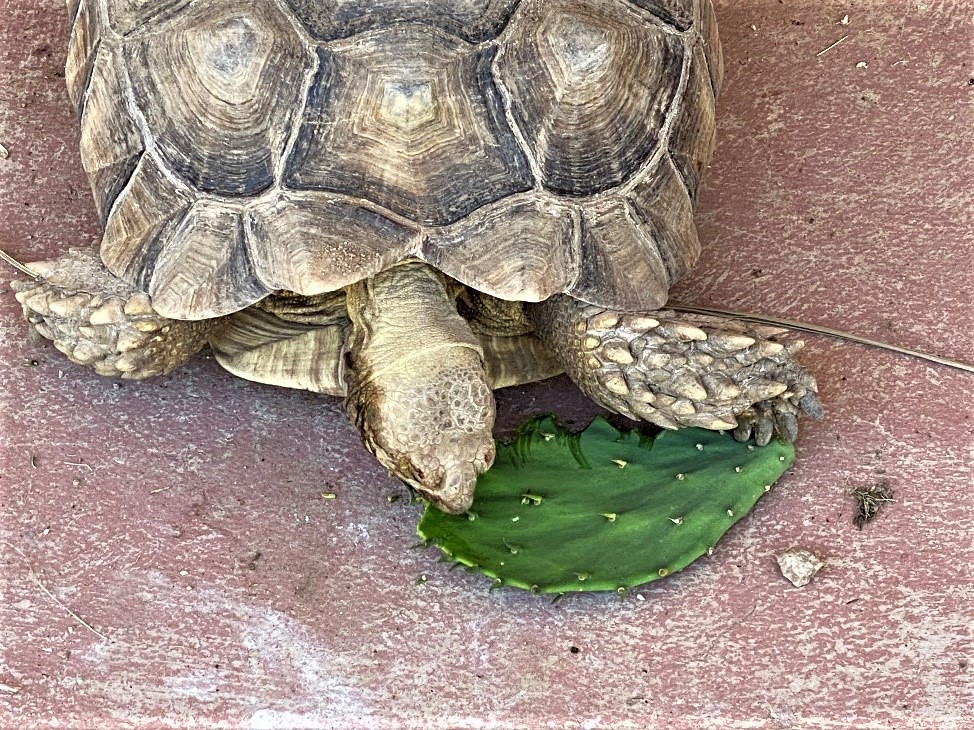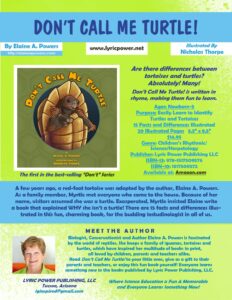Above image is of Cantata, an African Spurred or Spur-thighed Tortoises (Geochelone sulcata) and a member of my family
Is this a species thing?
I have several species of tortoises roaming about my house. Tortoises are not potty-trained, so every now and then I have to mop to clean the floor. After sweeping and spraying the spots, I mop the floor. Most of the tortoises move out of the way, running away to find a safe place. Not the sulcatas. No, they must not only be near the area that is being cleaned, they must be in it! Do they think there might be something tasty being collected? Do they feel the need to supervise? Being mopped or swept with a broom has no effect on them. They just won’t be moved aside.
I first noticed this annoying behavior with my large male sulcata, Duke. At 150 pounds, he can really be an impediment to cleaning. He usually ends up outside until the cleaning is completed. He paces in front of the door until he is allowed back in. Then he inspects the cleaned area – why, I am not certain.
Recently, I discovered my newly rescued female tortoise, Cantata, enjoys the same activity. She’s never met Duke, so he didn’t train her. I was mopping the tortoises’ communal basking place, and sure enough, she had to be right there, in the midst of the soapy water. The other tortoises had skedaddled, but Cantata would not move away. At least she’s physically easier to move, at only 40 lbs.
I would love to know why sulcata tortoises are cleaning fiends!
Sulcatas are native to sub-Saharan Africa and do well in deserts. Above, Cantata is enjoying a prickly pear (Opuntia sp.) pad.
Book Note: I have a redfoot tortoise, Myrtle, who was often called Myrtle the turtle. One day, fed up, she communicated to me that it was time to write a book about the differences between turtles and tortoises. That was it–the book came to me in rhyming stanzas, and it turned out that kids and their parents loved the science woven into a rhyming book! It’s a lot of fun to read, the rhymes make it easy to remember the differences, and the little scientists in your life will love it. You can read about Don’t Call Me Turtle! here and it is available for sale at Amazon.

